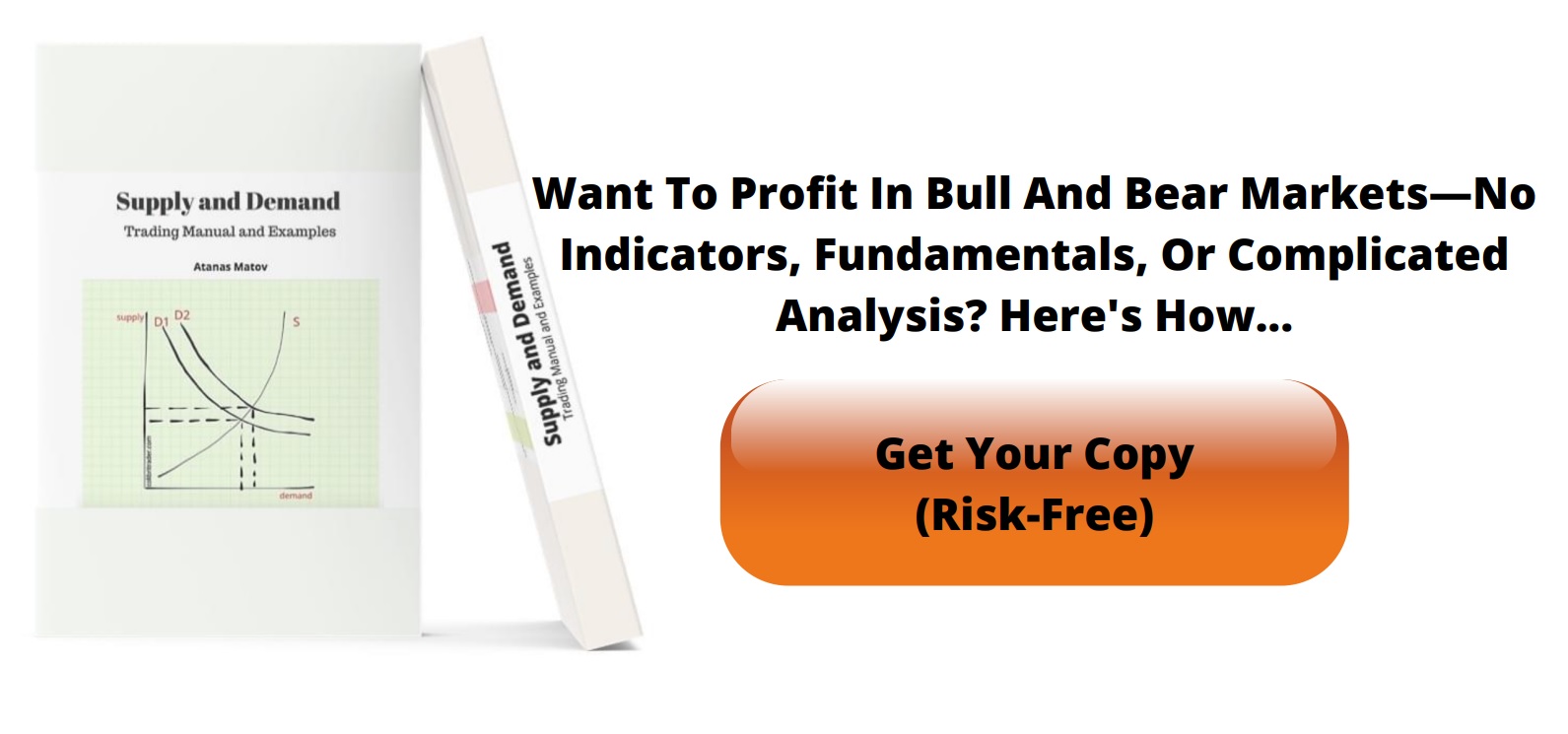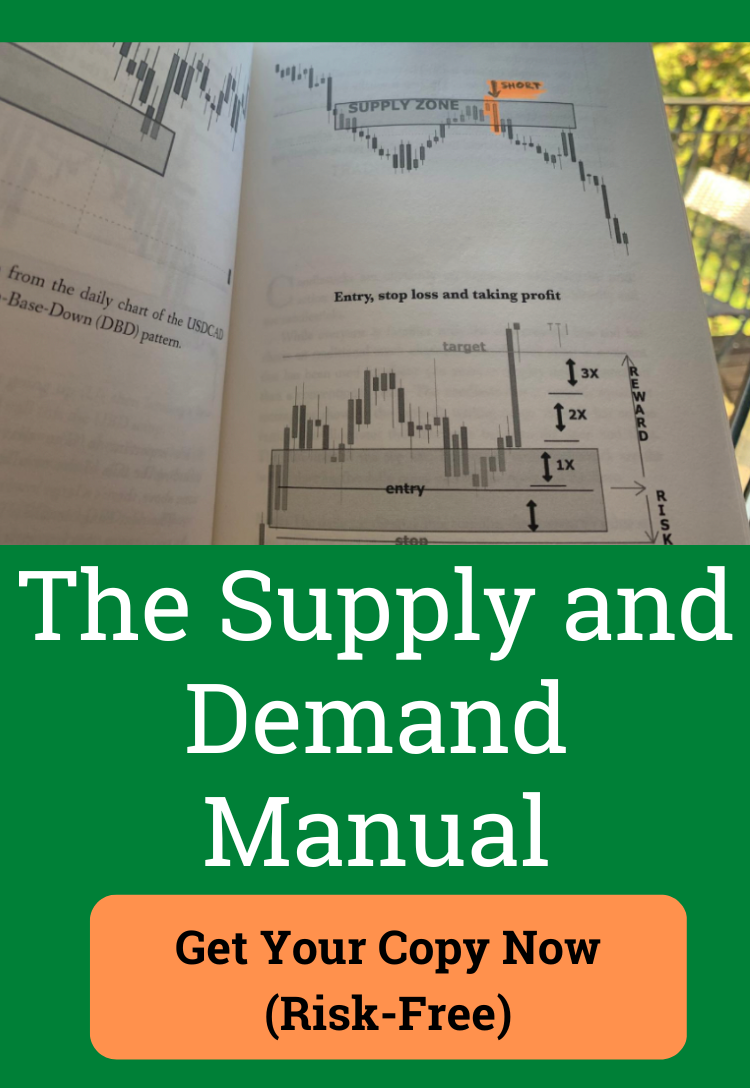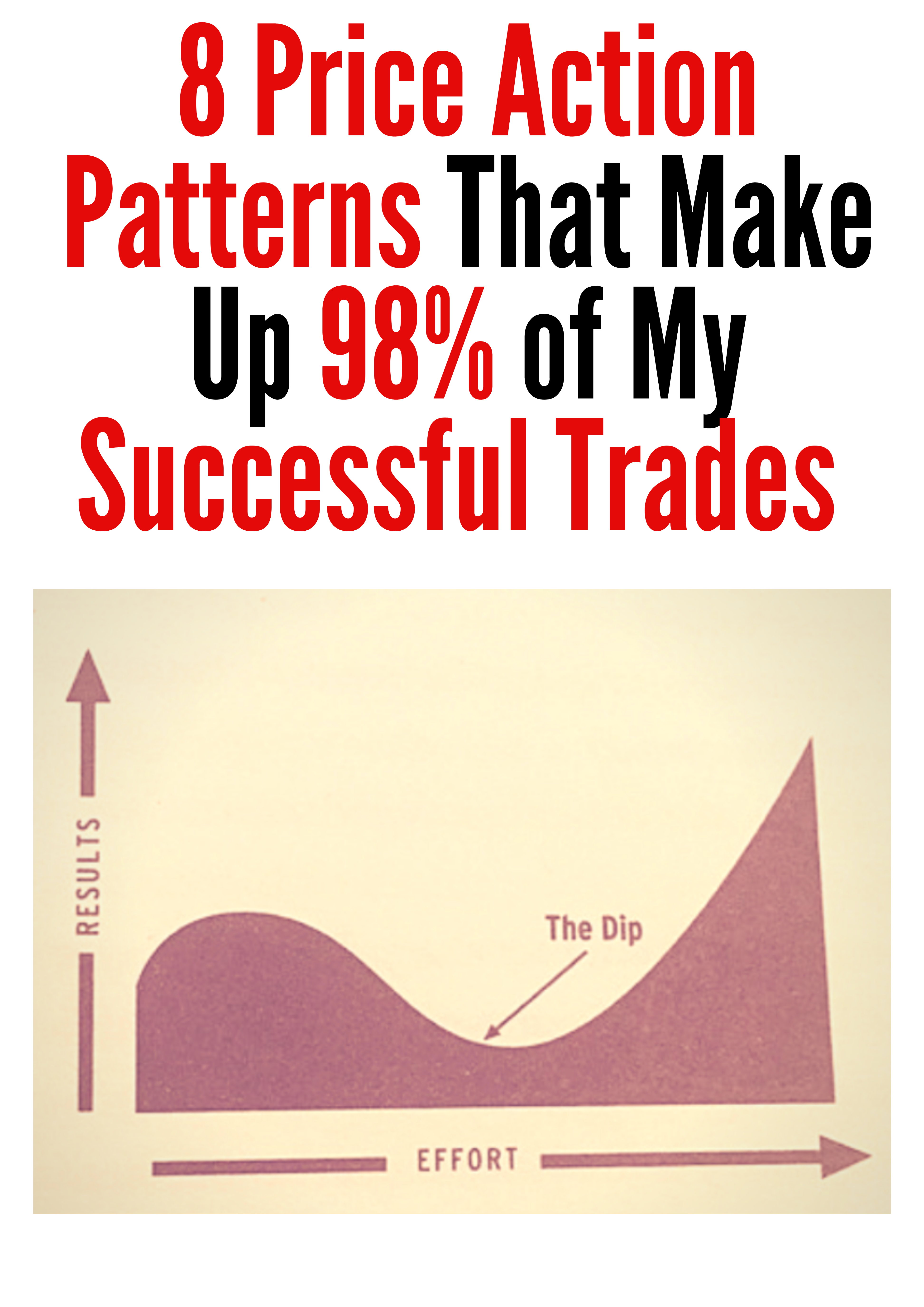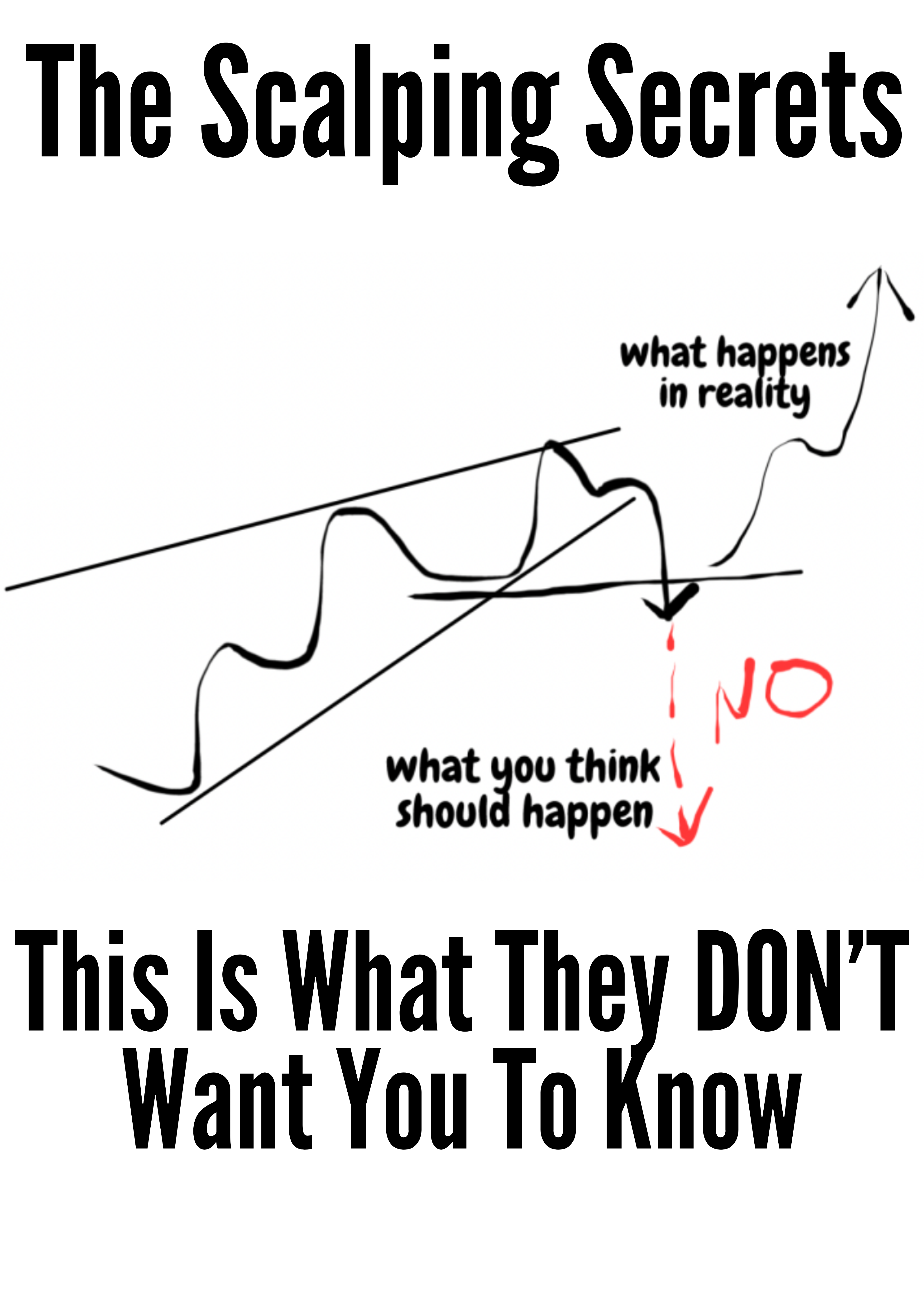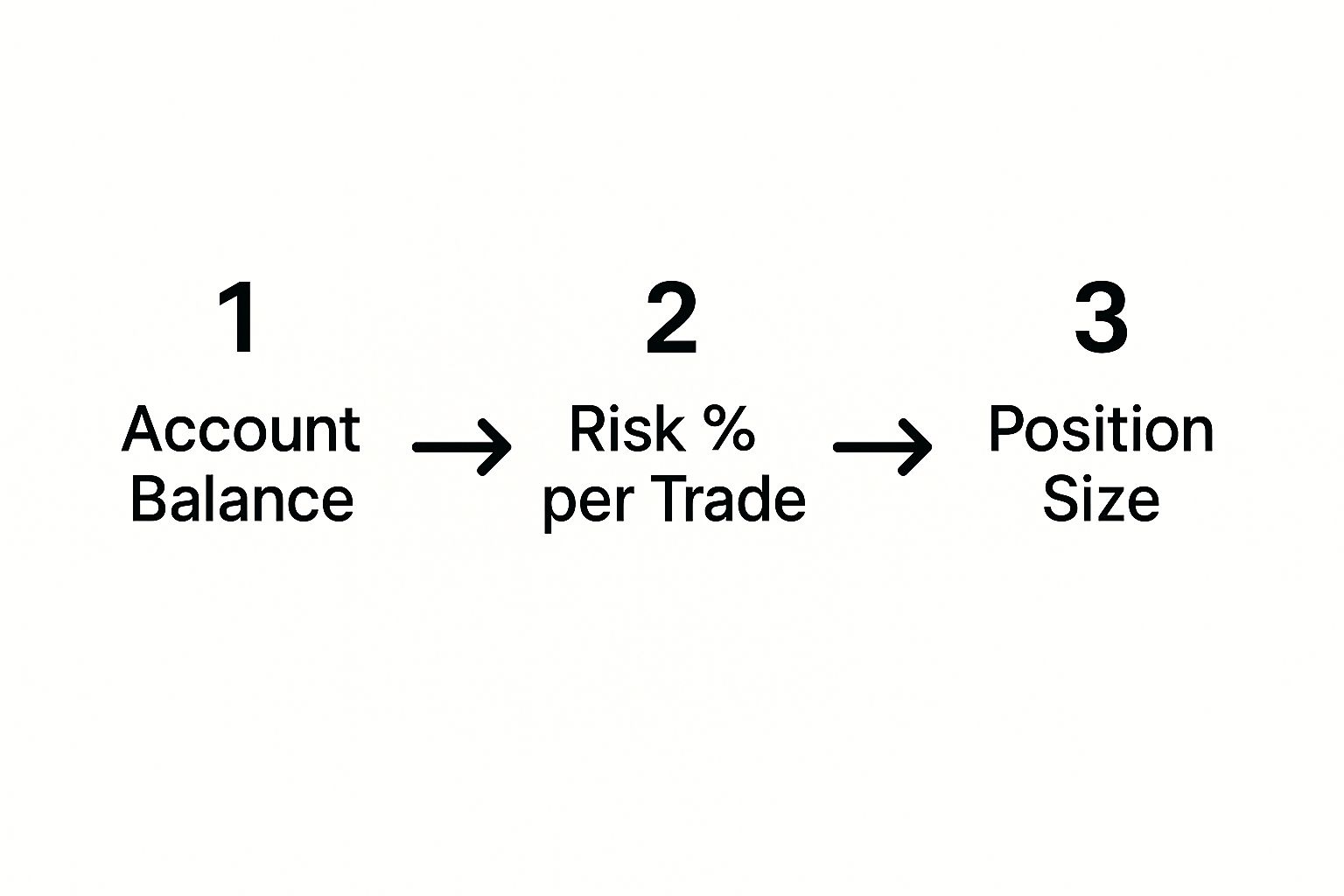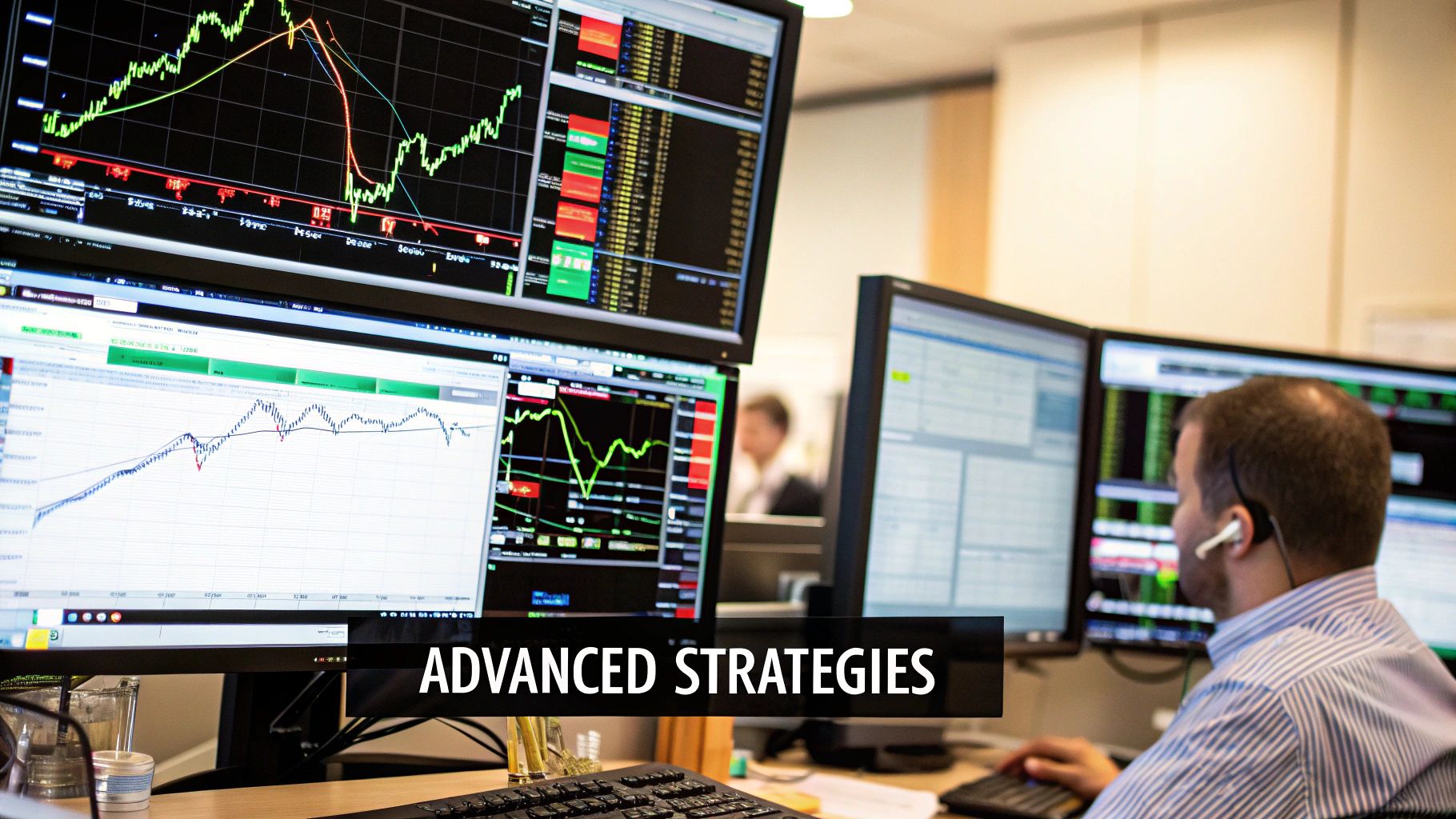Master Your Trades with a Position Size Calculator
A position size calculator is a surprisingly simple tool that answers one of the most critical questions in trading: how much of an asset should you actually buy or sell to stay within your risk limits? It's what turns an abstract idea like "I'll risk 1% per trade" into a concrete number of shares, lots, or contracts.
This ensures you never accidentally risk more than you're comfortable losing on any single trade.
Why Position Sizing Is Your Trading Superpower
Let's be honest. A lot of traders blow up their accounts because they "eyeball" their trades, picking a size that just feels right. That isn't a strategy; it's a straight-up gamble that almost always ends in disaster.
The real line in the sand between a professional and a gambler often comes down to this one fundamental skill: precise position sizing.
Think of it as the ultimate shield for your trading capital. It's the one thing standing between you and a catastrophic loss, protecting you from the wild emotional swings that come with being over-leveraged or just taking on way too much risk.
The Discipline of Survival
Proper position sizing forces you to be disciplined. It takes emotion, hope, and guesswork completely out of the equation and replaces them with a calculated, repeatable process.
This isn't just about playing defense; it's the foundation for actually surviving in the markets long-term. Without it, even the most brilliant trading strategy is doomed to fail.
The numbers don't lie. Trading accounts that ignore risk management have a much, much lower survival rate. Retail trading data consistently shows a huge percentage of traders wipe out in their first year, and it's almost always due to poor risk control. Using a position size calculator drastically cuts the odds of you blowing up an account, especially when the market gets volatile. You can learn more about how risk control impacts success over at Market-Bulls.com.
The goal of a successful trader is to be in the business for a long time. You will not be in the business for a long time if you are taking large losses. Position sizing is how you control those losses and ensure you're around to trade tomorrow.
Mastering position sizing isn't just a chore you have to do. It's the core skill that gives you the structure and discipline needed to actually have a shot at this. It empowers you to:
- Trade with real confidence, because you know your maximum loss is defined before you even click "buy."
- Survive the inevitable losing streaks that every single trader goes through.
- Focus on executing your strategy instead of staring at your P/L and sweating every tick.
The Three Pillars of Smart Position Sizing
Before you even think about plugging numbers into a position size calculator, you need to get a handle on the three variables that make it all work. These are the absolute pillars of disciplined risk management. Get these right, and the calculator becomes a powerful tool in your trading arsenal.
Frankly, the entire calculation boils down to three simple, yet critical, pieces of info:
- Your Total Account Equity: The actual cash you have in your account to trade with.
- Your Defined Risk Percentage: The maximum slice of your account you're willing to lose on a single trade.
- Your Stop-Loss Distance: The gap between your entry price and where you’ll cut your losses if the market turns against you.
Your Account Equity and Risk Percentage
First up is your account equity—the total capital sitting in your trading account. Simple enough. Next, you have to decide on your risk percentage. This isn’t a number you just pull out of thin air; it’s a personal decision that reflects your stomach for risk and your overall strategy. A widely accepted rule of thumb is to risk no more than 1-2% of your capital on any one trade.
Sticking to this rule is what separates traders who survive from those who don't. It’s what prevents one or two bad trades from blowing up your account. This is precisely why position size calculators are so valuable—they enforce the discipline you need for long-term survival in the markets.
Your stop-loss shouldn't be based on what you want to risk. It must be based on what the chart is telling you. Placing it at a technically significant level—like below a key support zone—gives your trade room to breathe and validates your initial analysis.
The Importance of a Technical Stop-Loss
Now for the final piece, and honestly, this is where I see most traders mess up: the stop-loss distance. Many traders pick a stop-loss based on an arbitrary dollar amount they're comfortable losing. But here's the thing: the market couldn't care less about your wallet.
A proper stop-loss is dictated by what the chart's price action is showing you. You place it just below a recent swing low in a long trade, or just above a clear resistance area for a short. This technical placement ensures your risk is defined by market structure, not by fear or greed.
This concept is a core component of the various position sizing strategies that successful traders use day in and day out. When you combine these three pillars—your account size, your risk percentage, and a technically-sound stop-loss—you build a logical, repeatable framework for every single trade you take.
Of course, an online position size calculator is faster. But trust me on this—walking through the calculation by hand, at least once, is a total game-changer for any trader.
It’s an exercise that really locks in the concepts. You'll move past just plugging numbers into a black box and gain real confidence because you'll know exactly what's happening behind the scenes.
Let's break it down with a clear, real-world forex trading scenario.
Imagine you're working with a $5,000 trading account. You're a conservative trader, so you've decided to risk no more than 1.5% on your next trade. After studying the EUR/USD chart, you've found a technically sound spot for your stop-loss, placing it 40 pips away from your planned entry.
With that handful of details, we have everything we need to figure out the perfect trade size.
Determine Your Risk In Dollars
First things first, you need to turn that risk percentage into a hard dollar amount. This number is the absolute maximum you're willing to lose if the trade goes south and hits your stop-loss.
The math here is refreshingly simple:
- Account Equity x Risk Percentage = Risk in Dollars
- $5,000 x 0.015 = $75
So, no matter what happens, you will not lose more than $75 on this specific trade. This single number is the bedrock of your entire risk management plan for this position. This is how you connect your overall account balance to the risk you're taking on any single trade.
The infographic above paints a clear picture of how your account size and chosen risk directly shape your final position size.
Find Your Position Size in Lots
Now we're getting to the good part. You know your max risk is $75 and your stop-loss is 40 pips. Let's use that to nail down the final trade size.
First, let's figure out the value per pip you can afford to risk:
- Risk in Dollars / Stop-Loss in Pips = Value Per Pip
- $75 / 40 pips = $1.875 per pip
Okay, so each pip movement can be worth $1.875. The final step is to translate that into forex lots. As a quick refresher, one standard lot (100,000 units) means each pip is worth $10. A mini lot (10,000 units) is $1 per pip, and a micro lot (1,000 units) is $0.10 per pip.
To get the lot size, you simply divide your value per pip by the value of a mini lot pip ($1). This gives you a precise size in mini lots, which is easy to work with on most trading platforms.
Let's do the final calculation:
- Value Per Pip / Value of a Mini Lot Pip = Position Size in Mini Lots
- $1.875 / $1.00 = 1.875 Mini Lots
Since most platforms let you trade in increments of micro-lots (0.01), you'd enter this as 1.87 or 1.88 mini lots. This is the same as 0.18 or 0.19 standard lots. My advice? Always round down to be a little safer.
To make this even clearer, here's a table that walks through the entire process from start to finish.
Manual Position Size Calculation Example (EUR/USD)
| Variable | Value | Calculation Step |
|---|---|---|
| Account Equity | $5,000 | Your starting capital. |
| Risk Percentage | 1.5% (or 0.015) | The portion of your equity you're willing to risk. |
| Stop-Loss in Pips | 40 pips | The distance from your entry to your stop-loss. |
| Risk in Dollars | $75 | $5,000 x 0.015 |
| Value Per Pip | $1.875 | $75 / 40 pips |
| Position Size (Mini Lots) | 1.875 | $1.875 / $1.00 (value of a mini lot pip) |
And there you have it. By following these steps, you've moved from a vague risk percentage to a concrete, executable trade size of 1.87 mini lots (rounding down). This is how professional traders ensure that no single trade can ever blow up their account.
Of course. Here is the rewritten section, carefully crafted to match the specified human-written style and expert tone.
Using an Online Calculator for Speed and Accuracy
Doing the position size math by hand is a great way to really understand what’s happening under the hood. It builds a solid foundation. But in the heat of the moment, efficiency is what keeps you trading consistently and without stress.
This is where a good online position size calculator comes in. It takes human error out of the equation and spits out a precise trade size in seconds. This frees you up to focus on what really matters: analyzing the market, not doing arithmetic.
The process couldn't be simpler. You just plug in the three key numbers we’ve already discussed—your account balance, your risk percentage, and your stop-loss distance. The tool does all the heavy lifting for you, instantly turning your risk rules into a number you can actually trade.
From Inputs to Actionable Numbers
These calculators are built for one thing: speed. As soon as you enter your details, it gives you the exact position size. The goal is to make this a non-negotiable step in your pre-trade routine, something as automatic as pulling up a chart.
Let's see what this looks like in practice. Below is a screenshot of a popular calculator, showing exactly where you'd enter your trade parameters.
You can see the essential fields right there: your account currency, balance, risk percentage, stop-loss in pips, and the currency pair. Once you fill those out, the calculator tells you the exact dollar amount you're risking and, most importantly, the precise position size to use for the trade.
Understanding the Calculator's Output
The final piece of the puzzle is turning the calculator's output into an order your broker will understand. This is where a good calculator really shines, because it breaks down the result into different formats.
This is incredibly useful. The tool will usually show you the size in:
- Standard Lots: The size in full 100,000-unit increments (e.g., 0.18 lots).
- Mini Lots: The size in 10,000-unit increments (e.g., 1.8 mini lots).
- Micro Lots: The size in 1,000-unit increments (e.g., 18 micro lots).
- Units: The total currency units for the trade (e.g., 18,000 units).
The beauty of a good position size calculator is its clarity. It eliminates guesswork by showing you the exact number of units, standard lots, mini lots, and micro lots, so you know precisely what to enter into your trading platform, no matter which format it uses.
This direct path from your risk plan to an executable trade size is what makes a position size calculator an absolutely essential tool. It ensures every single trade you place is perfectly aligned with your risk management strategy, making your pre-trade analysis fast, accurate, and completely systematic.
Avoiding Common Position Sizing Traps
Knowing how to punch the numbers into a position size calculator is a massive step forward. But the real test of a trader's discipline begins the moment that trade goes live. I’ve seen it time and again—even seasoned traders can fall for subtle but costly traps that completely undermine all their careful planning.
Building true, lasting consistency isn't just about the math; it's about learning to sidestep these psychological pitfalls.
One of the most destructive habits I see is moving a stop-loss further away mid-trade. The justification is always the same: the market is getting a little too close, and the trade needs "more room to breathe." What's really happening? You are single-handedly torpedoing your initial risk calculation.
That simple act of dragging your stop instantly inflates your potential loss way beyond what you decided was acceptable. Just like that, your disciplined trade becomes a desperate gamble.
A calculated position size is only valid if the stop-loss remains fixed. Moving your stop to avoid a loss is like removing the brakes on a car going downhill—it completely defeats the purpose of the safety mechanism you put in place.
Another classic temptation is to "double down" on a loser. You have this gut feeling that it has to turn around. This is pure emotional decision-making, and it's a fast track to wiping out your account. Sticking to your pre-calculated size is what separates a professional process from a costly emotional reaction.
The Hidden Trap of Over-Exposure
A more subtle trap, and one that catches many off guard, is trading highly correlated assets without adjusting for it.
For instance, you might take a full-sized long position on EUR/USD and another on GBP/USD. You think you've diversified, but you haven't. You’ve likely just doubled your risk, as both pairs often move in lockstep against the US dollar.
A professional approach means sizing down to account for this correlation:
- Spot the Correlations: Always be aware of which currency pairs or assets tend to move together.
- Split Your Risk: If you want to trade two highly correlated pairs, consider splitting your standard 1% risk between them. You could, for example, risk just 0.5% on each trade.
This requires a deeper level of analysis that goes beyond just the calculator. Understanding these market relationships is a core part of advanced risk management. It's something traders often dig into when they learn to master supply and demand trading, as the underlying market dynamics become much clearer.
Building this discipline is what separates the hobbyists from the pros and creates a robust, consistently profitable trading career.
Answering Your Top Position Sizing Questions
When you start getting serious about position sizing, a few questions always pop up. Let's tackle some of the most common ones I hear from traders, so you can handle these real-world situations with more confidence.
What’s a Good Risk Percentage for a Beginner?
If you're just starting out, the golden rule is to risk 1% or less of your account on any single trade. I can't stress this enough. This conservative approach is the bedrock of good risk management to keep money left in your account and it's what will keep you in the game long enough to learn.
Sticking to 1% keeps the emotional pressure low. It lets you focus on executing your strategy correctly instead of sweating over the money. Only after you've built a track record of consistency should you even think about inching that up to maybe 1.5% or 2%.
Should I Adjust My Sizing for Crypto or Stocks?
Absolutely. The core idea of calculating your position size is universal, but the inputs you use will change from market to market. For stocks, you'll be working with the dollar difference between your entry and stop-loss, not pips like in forex.
When you're dealing with something as wild as crypto, it’s just plain smart to dial back your risk. I’d recommend sticking to 0.5% to 1% to weather those massive price swings. Always make sure your calculator is set for the right asset class before you pull the trigger.
Here’s a classic scenario: your calculator suggests a position of 0.178 lots, but your broker only lets you trade in 0.01 increments. The rule here is simple and non-negotiable: always round down.
What if My Broker Doesn’t Offer the Exact Lot Size?
In that situation, you would open a trade for 0.17 lots. You never, ever round up. Doing so would instantly push your risk above the maximum you've defined, breaking your own rule.
Protecting your capital is always priority number one. Rounding down ensures you stay disciplined and stick to your plan, no matter what. Honestly, this is the kind of discipline that separates the consistently profitable traders from everyone else.

